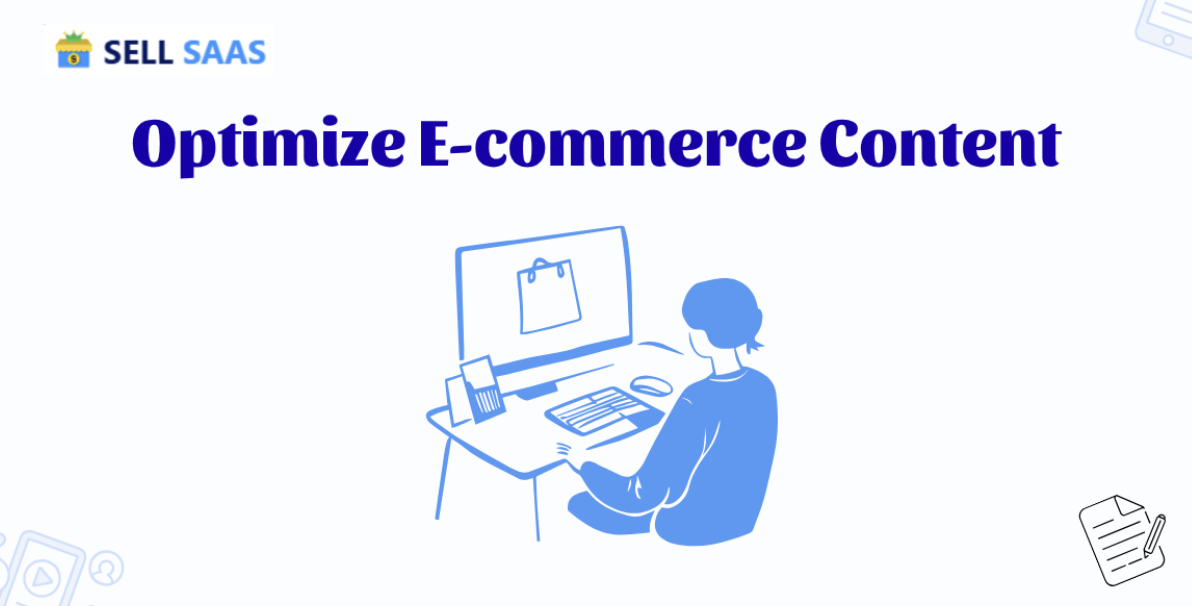
- 29th Jul '25
- Sell SaaS
- 5 minutes read
Strategies to Optimize E-commerce Content for Increased Conversions
As an e-commerce brand, even if your content is insightful, you must pay attention to optimizing it for both readers and search engines to drive meaningful conversions. Content having elements that search engines and readers dislike is unlikely to perform well or yield any fruitful results.
So, all your efforts, time, and resources will go in vain if you don’t take your content seriously.
Now, the question that arises here is how you can optimize your E-commerce content. This requires following the right strategies. In this blog post, we’ll discuss some of the right measures that optimize E-commerce content for increasing conversion rates.
Practical Content Strategies for Better E-commerce Performance
The following content strategies will help you optimize content and increase your sales.
-
Understand the Buyer’s Intent
Before optimizing your content, make it clear to yourself what the buyers are looking for.
-
Are they comparing products? (Commercial intent)
-
Browsing for products? (Navigational intent)
-
Ready to buy? (Transactional intent)
This refers to a “Buyer’s intent.” And, your content should be written around all of these intent stages.
Optimizing your words based on the buyer’s intent makes your message feel useful and relevant.
-
Make Product Descriptions Speak Directly to People
Product descriptions are more than just technical details. These talk to your customers. These become impactful when you also focus on experiences along with specifications.
For example, rather than just mentioning "100% cotton T-shirt," write "Stay cool and comfy all day with this 100% cotton and breathable T-shirt."
Here are a few things that you can consider to ultimately make your descriptions speak:
-
Start with the benefit, then support it with features.
-
Avoid fluff, be precise and descriptive.
-
Add use cases so that the buyer can picture themselves using that product.
Your description should be unique, as it negatively affects your site’s ranking and damages your SEO over time.
-
Refine and Rewrite Content
You have posted content with a good amount of information in it, but it is not providing any results in terms of ranking and engagement. There can be several reasons behind this. However, the most common one is poorly-crafted content that usually contains poor word selection, wrong sentence structuring, and inconsistent tone.
To achieve optimization, thoroughly read the content and highlight those that sound distracting or unrelated. When done, start rewriting in an improved way while preserving the primary context.
Since doing it manually can be time-consuming and hectic, especially when you need to refine longer content, many turn to AI rewriter to automate revisions and improve overall readability.
It makes the rewriting process effortless by revamping the existing paragraphs in an improved manner while preserving the primary meaning. The tool makes the following changes to your content to make it better:
-
Rephrases robotic wording into natural, smooth lines.
-
It improves the sentence structure.
-
It removes the fluff and keeps your content on point.
Such a tool is very useful for refining and improving the product descriptions, customer emails, or even sections of your blog post.
-
Use Visual Content to Support the Message
Did you know? Search engines like Google also index and rank visual elements. So, adding or refining visuals can go a long way toward attracting and driving potential customers to your store.
Therefore, while optimizing content, don’t ignore visuals. Optimize them by replacing low-quality images or screenshots with good ones.
Apart from this, consider adding:
-
Explaining videos with the help of a tool like Canva for complex products.
-
Lifestyle shots to show real-life use.
-
Infographics or diagrams to explain features clearly.
Compress the size of images and videos; the lower the size, the better it is optimized. Make use of the appropriate formats; for instance, WebP is currently the most popular image format.
-
Improve Scannability for Faster Engagement
Nowadays, potential customers usually scan the information without reading every word. If your product’s landing page consists of a whole chunk of plain text, visitors will bounce back. Additionally, it also makes it difficult for search engine crawlers to reward it with a deserving ranking.
To ensure your e-commerce content is scannable, keep it properly formatted. The following are some suggestions for making your message easier to read:
-
Use short paragraphs (2–3 lines max)
-
Add headings and subheadings
-
Use bullet points to break lists or features
-
Highlight important words using bold text sparingly
A well-structured and formatted content increases the chances that the readers will read the complete page, which in turn brings conversions.
Final Thoughts
Content plays a very important role in converting visitors into potential buyers. So, it is important for e-commerce brands to focus on content that is perfectly optimized according to search engines as well as the targeted audience. Such content will dominate the search results and drive maximum potential customers.
In this blog post, we have discussed some of the proven strategies for optimizing your content to boost conversions.



